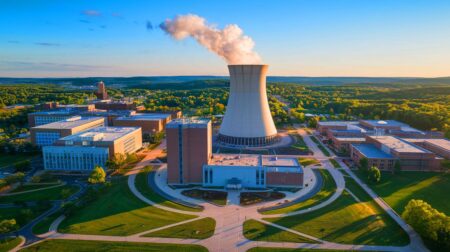Solar and wind are clearly the future of energy, yet the adoption of renewables has been largely constrained by their intermittent nature. Innovations in energy storage technology might change that.
In the last year alone energy storage has grown by 6 GWh of capacity globally and it has the potential to grow 13 times present levels by 2024. Renewables could reach a cumulative capacity of over 942GW with $620 billion in investments by 2040.
With energy storage costs having fallen by 85% since 2010, solar-plus-storage suddenly becomes a great option, especially when combined with the fast growth of solar and wind markets. Novel alternatives to lithium-ion batteries, such as inorganic electrolyte based storage, will mean further increases in energy storage durability, safety, and competitiveness.
All these developments are set to remake the renewable energy landscape.
Energy storage is vital for our 24/7 urbanized societies, It helps balance supply and demand with the help of smart grid networks. It also holds out high hopes for electric vehicles, over a billion of which are expected to be on roads by 2050, along with a 70% electrification of passenger transport, according to a recent report by IRENA.
More reliable cars and better-developed infrastructure fueled by clean and readily available energy will be a key for future transitions to low-carbon energy. Flexible demand, frequency regulations, and ways to avoid grid congestions will be among the many benefits improved energy storage will offer.
A long-awaited welcome
More and more states, cities, and companies are starting to embrace energy storage as an essential bridge in their renewables agendas. New York plans to allocate $400 million for the deployment of 3 GW energy storage by 2030, while many other cities are developing their own energy storage roadmaps and embracing energy storage innovations.
Effective energy storage is also vital for global companies that already depend 100% on renewables or are planning to do so, be it Google, Apple or other tech giants. At the same time, legislative initiatives like the European Union’s Electricity Market Design Directive are likely to give energy storage an important boost in terms of supportive frameworks to operate at the scale of national economies.
Thanks to increased government support, new high-capacity energy storage plants are popping up everywhere from Africa to Europe to Australia and beyond, many above the 100 MW mark.
Trouble on the horizon
For the future energy system to be reliable and resilient, we will need to radically expand the time during which energy can be stored: from hours and days to weeks and months. It is a need that some companies are starting to address. We will need renewables to become more adapted to seasonal changes and unexpected weather dynamics like extended rainfall. Cost-effectiveness will also have to be taken into account.
Energy storage innovations also mean a change of concerns. With fossil fuels being rolled back, renewable technologies and batteries used for them are coming under scrutiny too. Metals, such as cobalt, manganese, nickel, tellurium and gallium, need to be mined to produce large quantities of batteries and solar panels. Such mining activities are creating environmental degradation and social conflicts in Asia, South America and other places around the globe.
Thus, we often end up with a paradoxical situation of renewables transitions potentially destroying some of the life renewables are meant to save. The mass recycling of solar panels in an environmentally friendly manner remains a challenge. Likewise, the costs of renewables will need to drop further in order for the technology to become more appealing to more consumers. We will need to become much more attentive and careful in our societal priorities.
In addition, a move towards the large-scale adoption of sustainable energy also entails reevaluating how much energy we actually need in order to adopt modern but sustainable lifestyles. No amount of clean energy or energy storage capacity will save us if we carry on wasting natural resources. Therefore, learning to address our real needs will be crucial for a sustainable energy future.
Did you like it? 4.6/5 (28)








